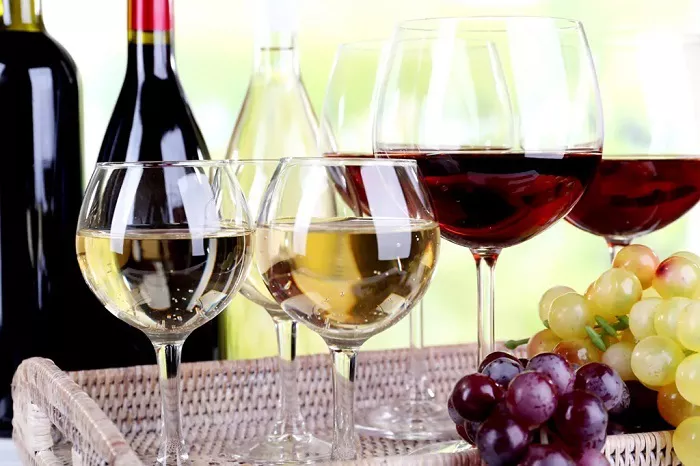Crisscrossing the resplendent Tuscan countryside in a Fiat Punto — a ubiquitous sight in this region — the vibrant greenery of the Montepulciano hills stuns with a near-blinding intensity. Each curve in the road unveils a picture-perfect tableau: elegant ruins among olive groves, domed neoclassical villas, and vineyards lined with precision-cut vines. This storied landscape has drawn sophisticated travelers since the era of the Grand Tour, and it remains as captivating today.
South of Siena, near the Umbrian border, a new luxury destination is adding a fresh dimension to the region’s timeless appeal. Poggio alla Sala, an 1800s ochre-hued villa perched on a gentle slope once occupied by Romans, has been transformed into a vineyard resort. Surrounded by panoramic valley views, the estate has been meticulously renovated with a blend of botanical opulence and historic reverence. Guests are welcomed through winter gardens and frescoed halls into restored quarters, including rooms in the original orangery and stables, now fitted with mosaic-tiled baths and oversized windows that frame sweeping vineyard vistas.
The estate’s three serene pools, edged by cypress trees and plush loungers, attract visitors as much as the natural beauty and gastronomic riches of the surrounding Val d’Orcia. Just beyond the resort, highlights include the terraced gardens of La Foce and the renowned Chianina beef served at La Toraia, a rustic restaurant overlooking its own cattle.
While Poggio alla Sala is ideal for warm-weather getaways, it retains its allure year-round, particularly due to its historic wine cellar, which hosts complimentary tastings twice a week. Though Montepulciano wines have often stood in the shadow of Chianti and Brunello di Montalcino, they remain deeply cherished by local vintners. At the heart of the region’s wine legacy is vino nobile, a robust red made primarily from the indigenous prugnolo gentile grape. Once reserved for clerics and nobility, vino nobile has a storied past — and now, a bold new future.
This year marks a pivotal moment in Montepulciano’s vinicultural journey. A consortium of winemakers has launched a new top-tier classification called pieve, aimed at showcasing the nuanced micro-terroirs within the region. Named for 12 medieval pievi (parishes) demarcated by ancient roads and rivers, the new wines must contain at least 85% prugnolo gentile — a stricter standard than the 75% required for traditional nobile. The first bottles of pieve matured this past winter and will begin reaching select cellars this autumn, including Poggio alla Sala’s own Pieve Sant’Albino.
“This is a renaissance for our wine,” says Marco Castignani, vintner at Fattoria del Cerro. “For the first time, we can map the taste profile of each terroir.” Castignani’s estate sprawls across 600 hectares east of Montepulciano, where forests once gifted by noble families to the church have given way to thriving vineyards and olive groves. From his hilltop villa, now a hotel hidden behind stone pines, to a sleek new winery, Cerro annually produces over one million bottles of Montepulciano reds. This summer, it will release 3,000 bottles of Pieve Sant’Ilario, crafted from vines rooted in silty, calcium-rich soils.
The pieve designation returns Montepulciano to its religious and agrarian roots. Castignani cites a 1377 tale of one pieve sending a litre of wine monthly to another as evidence of wine’s enduring local importance. “The pieve is part of our original winemaking story,” he says. In Montepulciano, wine appreciation begins not at adolescence but, as he jokes, at baptism.
To foster appreciation for these hyper-local distinctions, Cerro is expanding its offerings, including a modern guesthouse and restored winemaker cottages. The aim is to encourage oenophiles to follow the pieve map and explore the diverse soils and flavors of Montepulciano — directly at the source.
Drawing tourists away from Montepulciano’s bustling hilltop center is no small feat. The town, with its honey-colored stucco buildings and Medici-era architecture, remains a showstopper. Yet even here, spring provides a rare serenity. In the cellar of Talosa, a 16th-century winery built atop Etruscan ruins, visitors can savor a glass of Nobile di Montepulciano Riserva paired with bruschetta drenched in estate-pressed olive oil, surrounded by the quiet majesty of the ancient city.
Despite the pieve’s limited early availability, one bottle made a surprise appearance during a visit to Vecchia Cantina di Montepulciano, a co-operative winery. There, manager Tiziana Mazzetti presented the Pieve Cervognano by Redi — a refined red from an 18-year-old vineyard east of town. The wine, soft and elegant with a gentle fruity finish, contrasted the sharper edges of a traditional nobile. “Some wines have elegance; others, more presence,” Mazzetti explained. “It’s not just about age — it’s about the soul of the soil.”
Though discerning palates are best suited to appreciating the subtle complexities of pieve wines, the shift represents a significant step for Montepulciano. “Vino nobile didn’t have much identity,” Mazzetti admits. “But in our little terroir, we have 12 types of soil and 12 histories. What was once our weakness is now our strength.”
You Might Be Interested In:


